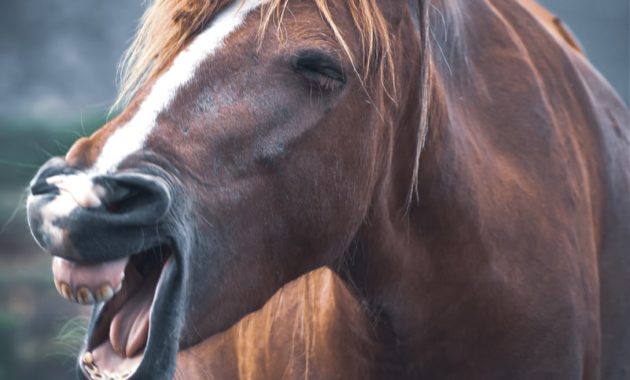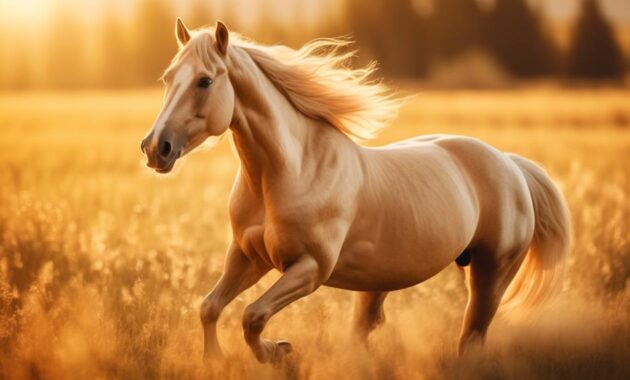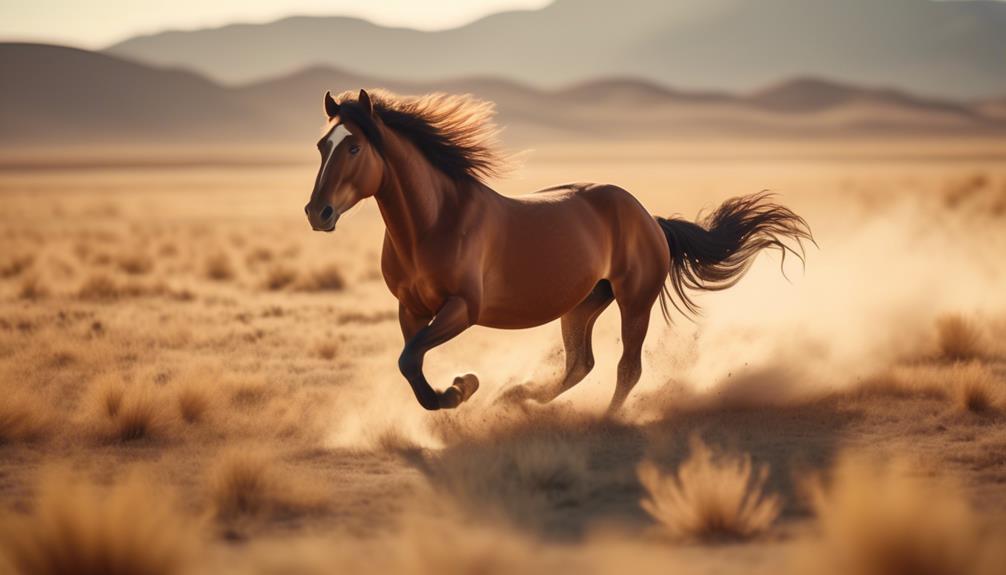
Little do many people know that the Mustang horse, with its wild and majestic allure, is not just a breed of horse, but a symbol of freedom and resilience.
As one delves into the world of these marvelous creatures, it becomes clear that there is much more to discover about their history, traits, and unique appeal.
From their humble beginnings to their significance in various equestrian disciplines, the Mustang horse holds a captivating story that is waiting to be unraveled.
So, prepare to be taken on a journey into the awe-inspiring world of the wild and majestic Mustang horse.
Key Takeaways
- The Mustang horse is a symbol of strength, athleticism, and endurance.
- The breed has a rich history, originating from Spanish Conquistadors and adapting to harsh environments.
- Mustangs come in a wide range of colors and require regular grooming to maintain coat and hoof health.
- Training and handling Mustangs requires patience, consistency, and positive reinforcement techniques.
Mustang Horse Description
The Mustang horse is a breed known for its muscular and symmetrical physique, weighing in at around 750 pounds. With a lifespan of approximately 20 years, this majestic creature possesses a crested and long neck, sloping shoulders, and a fine muzzle, giving it a proud and unique appearance.
Its legs are well-defined, and its back is straight, showcasing its athletic build. The Mustang horse also boasts rounded and compact hooves, along with a low-set tail. These physical features make it an ideal breed for endurance and pleasure riding.
With its sturdy and independent temperament, the Mustang horse is best suited for experienced handlers and trainers, as well as owners and riders of all levels. Despite its initial difficulty in training, this highly intelligent breed is willing to learn and work with its riders, making it a remarkable companion.
Mustang Horse Breed History
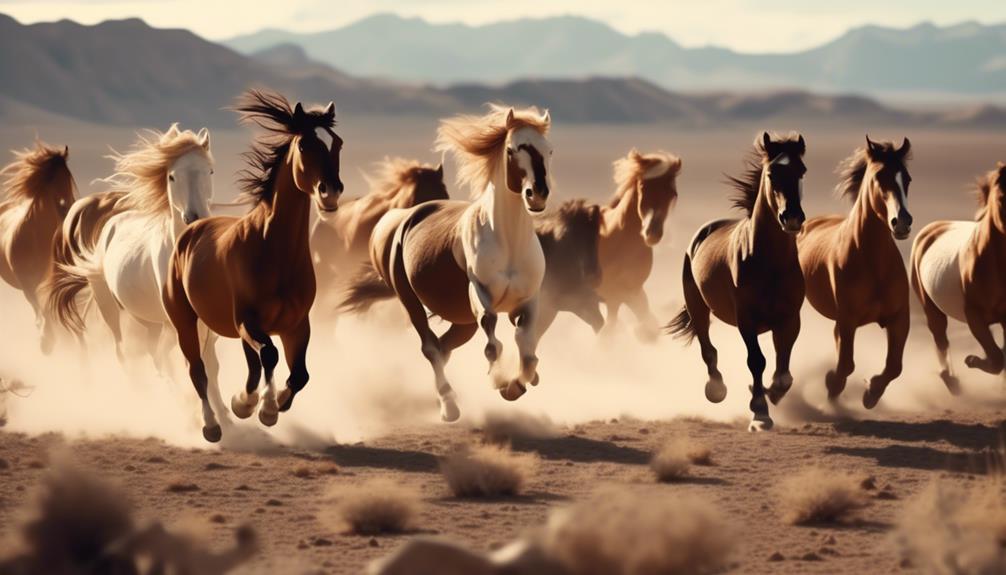
Reintroduced by Spanish Conquistadors, the Mustang horse breed has a fascinating history rooted in North America.
The wild horses that once roamed the continent went extinct around 10,000 years ago. However, in the 16th century, the Spanish government brought horses back to North America, including the areas that would later become the United States. These horses, a mix of Andalusian, Arabian, and Barb breeds, were left to roam freely in the open plains. Over time, they adapted to the harsh environments and developed the characteristics that define the Mustang breed today.
The word ‘Mustang’ is derived from the Mexican word ‘mestengo,’ meaning ‘stray’ or ‘wild.’ The Spanish government encouraged the population of wild horses, and their descendants continue to roam the American West, representing a living testament to a remarkable chapter in American history.
Mustang Horse Traits
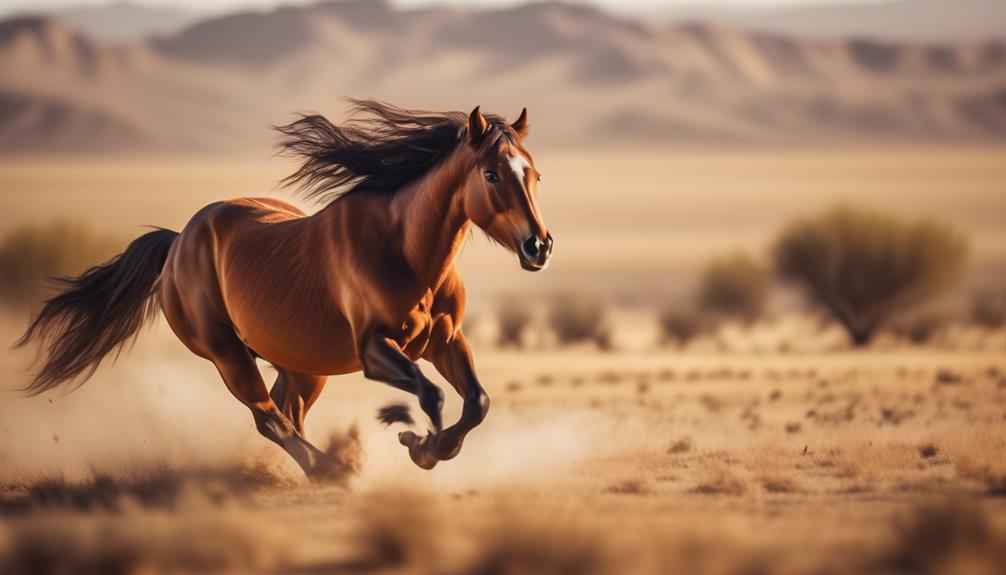
After their reintroduction by Spanish Conquistadors, the Mustang horse breed developed a range of unique and desirable traits. These traits make the Mustang horse well-suited for experienced handlers and trainers, as well as riders of all levels.
The Mustangs are known for their sturdy and independent temperament, which can make them initially challenging to train. However, they’re highly intelligent and willing to learn and work with their riders. With an even temperament, they’re suitable for both endurance and pleasure riding.
In terms of appearance, Mustang horses have a lovely symmetric and majestic carriage, with a muscular body that showcases their strength, athleticism, and high endurance.
Mustang Horse Colors and Grooming
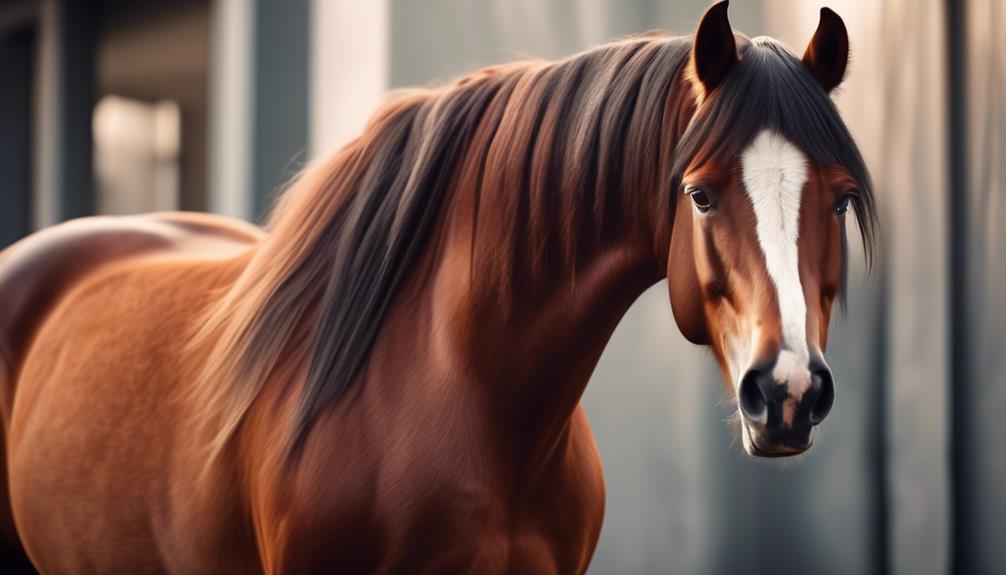
1) Mustangs come in a wide range of colors, from the standard horse colors like chestnut, black, and bay, to more unique shades such as white, champagne, cremello, grey, dun, grullo, buckskin, pinto, palomino, roan, perlino, and spotted. Their coat colors can be as diverse and beautiful as the landscapes they roam.
2) Grooming a Mustang is relatively easy and straightforward. Regular brushing is necessary to remove dirt and debris from their coat. Additionally, they should be washed occasionally to keep their coat clean and shiny. It’s important to use specific brushes for sensitive areas, such as the face and legs, to avoid causing any discomfort or irritation.
3) Mustangs have a natural beauty that shines through their well-groomed appearance. With a little care and attention, their coats can be kept in excellent condition, showcasing the stunning colors and patterns that make them truly marvelous.
Mustang Horse Overall Description
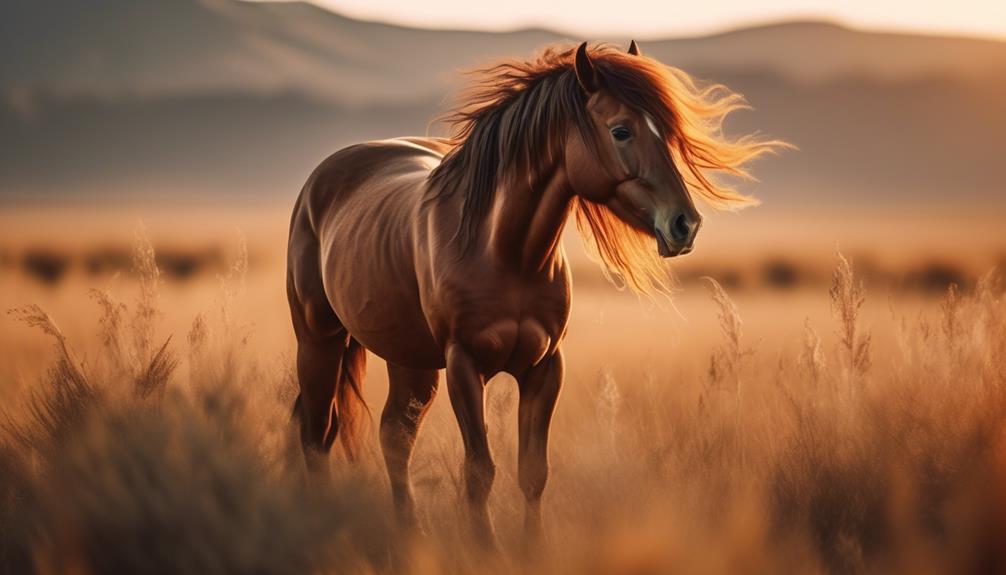
Mustang horses are known for their muscular bodies, strength, athleticism, and high endurance. They’ve a sturdy and compact build, with defined legs and a straight back. Their physique allows them to excel in various activities, such as ranch work, trail riding, and even competitive sports.
Mustangs have a unique and proud appearance, with a crested and long neck, sloping shoulders, and a fine muzzle. Their rounded and compact hooves, along with their low-set tail, contribute to their overall balanced and majestic carriage.
With their strong and athletic bodies, Mustang horses are well-suited for endurance riding and can cover long distances with ease. Their high endurance and strength make them ideal companions for riders of all levels, from experienced handlers to beginners looking for a reliable and trustworthy mount.
Mustang Horse Training and Handling
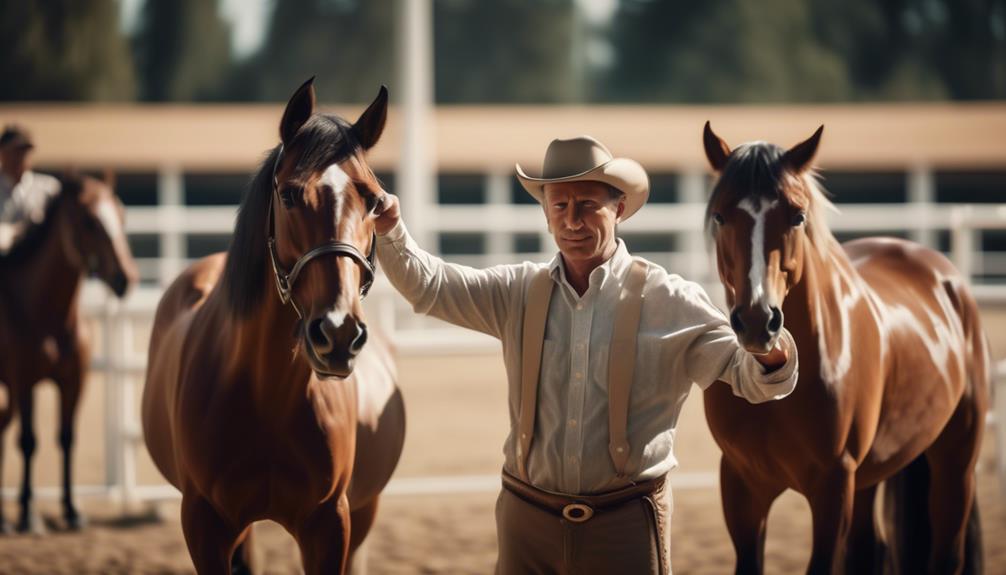
Training and handling Mustang horses requires patience, consistency, and a deep understanding of their intelligent and independent nature. To effectively work with these majestic creatures, trainers and handlers must keep the following in mind:
- Establish Trust: Mustangs are naturally wary of humans due to their wild nature. Building trust through gentle and consistent handling is crucial in gaining their cooperation and respect.
- Use Positive Reinforcement: Mustangs respond well to positive reinforcement techniques such as rewards and praise. This encourages them to learn and perform desired behaviors willingly.
- Gradual Progression: Mustangs thrive on gradual progression and prefer a step-by-step approach to training. Breaking down tasks into smaller, achievable steps helps them grasp concepts and prevents overwhelm.
Mustang Horse Care and Maintenance
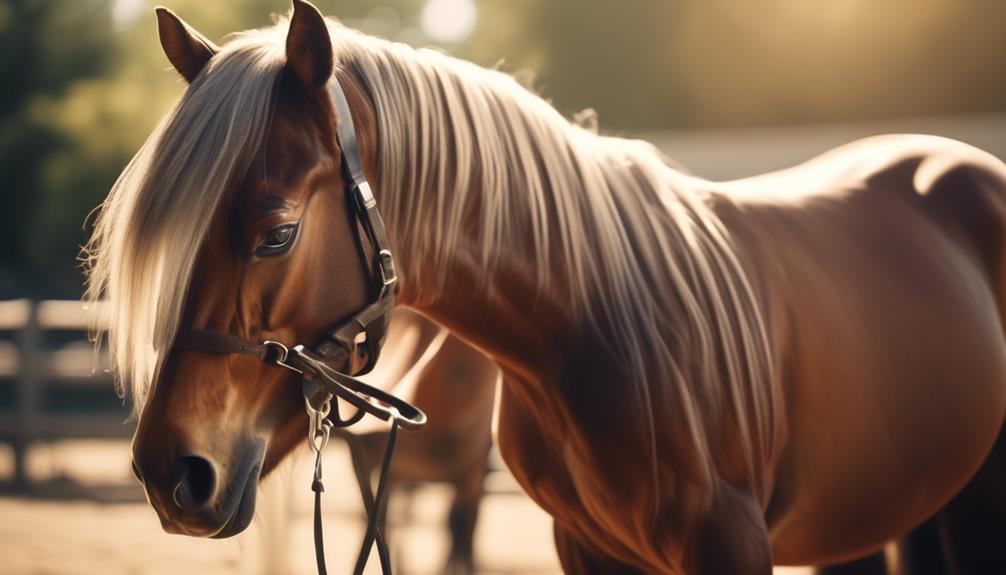
Proper care and maintenance of Mustang horses is essential for their overall well-being.
Mustangs require a balanced diet consisting of high-quality hay or pasture, supplemented with grain and minerals if needed.
Regular veterinary care, including vaccinations and dental check-ups, is important to ensure their health.
It’s also crucial to provide them with adequate shelter and protection from extreme weather conditions.
Regular exercise and mental stimulation are necessary to keep them physically and mentally fit.
Mustangs should be groomed regularly to maintain their coat and hoof health. This includes brushing, hoof trimming, and bathing when necessary.
Additionally, regular monitoring of their weight and overall condition is important to identify any potential health issues early on.
Frequently Asked Questions
What Is the Average Height of a Mustang Horse?
The average height of a Mustang horse is around 14 to 15 hands. They possess a muscular body with strength, athleticism, and high endurance, making them suitable for various levels of owners and riders.
How Fast Can a Mustang Horse Run?
A mustang horse can run at impressive speeds, reaching up to 50 miles per hour. Their strong and muscular bodies, combined with their high endurance, make them capable of covering long distances in a short amount of time.
Are Mustang Horses Prone to Any Specific Health Issues?
Mustang horses, like any breed, can be prone to specific health issues. It is important for owners to be aware of potential issues such as lameness, colic, and dental problems, and to provide regular veterinary care to ensure their well-being.
Can Mustang Horses Be Used for Competitive Sports?
Yes, mustang horses can be used for competitive sports. They have a muscular body, high endurance, and athleticism, making them suitable for various disciplines. With proper training, they can excel in events such as endurance riding, dressage, and show jumping.
Are Mustang Horses Good for Beginners or Inexperienced Riders?
Mustang horses are not ideal for beginners or inexperienced riders due to their sturdy and independent nature. However, with the guidance of experienced handlers and trainers, they can become suitable companions for riders of all levels.
How Do Mustang Horses Compare to Gypsy Horses in terms of Majesty and Beauty?
Mustang horses and Gypsy horses both exude a colorful equine delight with their distinct beauty and majesty. The spirited Mustangs, with their untamed grace, symbolize freedom and power, while the Gypsy horses captivate with their enchanting feathered feet and flowing manes, evoking a sense of whimsy and romanticism.
Conclusion
In conclusion, the Mustang horse truly lives up to its title of being wild and majestic. With its impressive history, exceptional traits, and striking appearance, this iconic breed has captured the hearts of equestrians and enthusiasts around the world.
From its independent temperament to its willingness to work with riders, the Mustang’s allure is undeniable. Whether it’s for endurance riding or pleasure, this horse’s even-tempered nature and majestic carriage make it a favorite among horse lovers of all levels.

